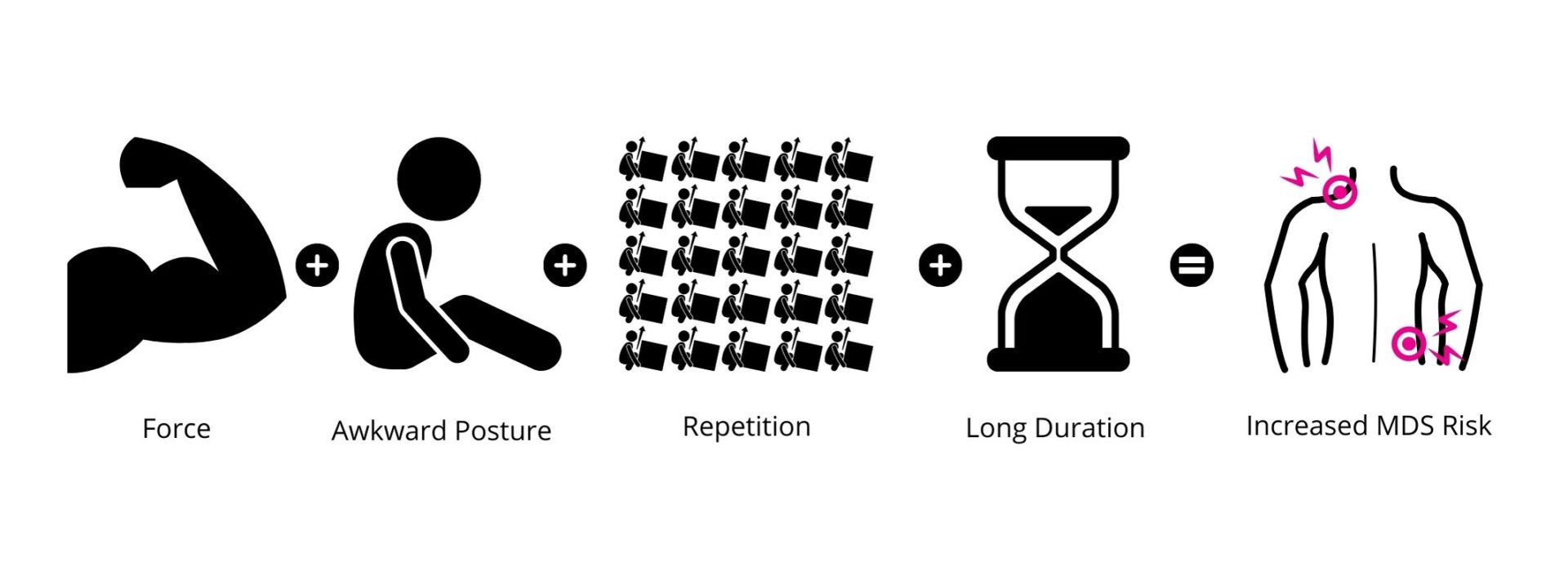Risk Factors
Risk factors that may lead to the development of MSDs include:

The risk of MSD injury depends on work positions and postures, how often the task is performed, the level of required effort and how long the task lasts.
- Exerting excessive force. Examples include lifting heavy objects or people, pushing or pulling heavy loads, manually pouring materials, or maintaining control of equipment or tools.
- Performing the same or similar tasks repetitively. Performing the same motion or series of motions continually or frequently for an extended period of time.
- Working in awkward postures or being in the same posture for long periods of time. Using positions that place stress on the body, such as prolonged or repetitive reaching above shoulder height, kneeling, squatting, leaning over a counter, using a knife with wrists bent, or twisting the torso while lifting.
- Localized pressure into the body part. Pressing the body or part of the body (such as the hand) against hard or sharp edges, or using the hand as a hammer.
- Cold temperatures. In combination with any one of the above risk factors may also increase the potential for MSDs to develop. For example, many of the operations in meatpacking and poultry processing occur with a chilled product or in a cold environment.
- Vibration, both whole body and hand-arm, can cause a number of health effects. Hand-arm vibration can damage small capillaries that supply nutrients and can make hand tools more difficult to control. Hand-arm vibration may cause a worker to lose feeling in the hands and arms resulting in increased force exertion to control hand-powered tools (e.g. hammer drills, portable grinders, chainsaws) in much the same way gloves limit feeling in the hands. The effects of vibration can damage the body and greatly increase the force which must be exerted for a task.
- Combined exposure to several risk factors. May place workers at a higher risk for MSDs than does exposure to any one risk factor.
